In Aerospace Boring, It's All About the Tool
Aerospace is unique among industries in its thirst for component accuracy. Flight-critical parts are expensive to begin with, then must be machined to ‘blemish-free’ precision. Unlike any other industry, anything that goes into the air has to be on spec, as the smallest imperfection in machining can adversely affect flight safety. For example, jet engine manufacturers have found that even the smallest micro-burrs could produce catastrophic results. This forces them to spend the extra time ensuring all holes are burr-free, all corners blend seamlessly, and no stress fractures result from machining.
Shoulders, Tapers, and Blend Radii
These intense requirements on aerospace components extend to the tooling used to make them. In the case of boring, an operator can’t afford to use a tool that doesn’t have the exact form of the shoulder that he’s trying to produce. Blending radii becomes critical in this respect because they take the guesswork out of shoulders. Today, standard boring tools can usually be supplied with radii as small as 4 thousandths, or up to 31 thousandths of an inch. But often times with aerospace parts, radii from 31 thousandths up to 125 thousandths, are designed to eliminate stress risers. Not every boring tool company can claim to have inserts and insert holders, as standard (or at least semi standard), to produce these profiles. And traditional 90 degree shoulders aren’t the only profile in an aerospace machinist’s repertoire. In the case of a larger bore leading into a smaller bore, aerospace manufacturers are likely to eschew a 90 degree shoulder in favor of a 30 degree to 45 degree taper, improving the component’s strength. Not only do does an operator then have to machine that 30 degree lead angle, but he will want the radius, let’s say, on a 2 1/8 inch bore to have a ¼ inch radius.
To produce a chatter-free tapered hole – especially with large-radius tapered holders – rigidity is extremely important. And to achieve a large radius, each portion of the modular system must work in concert, with no float or play to diminish rigidity. Many companies do quite well with their modular tooling, maintaining good rigidity through several connection points. But the area in which all but the highest-end cutting tools tend to lose rigidity is within the boring head itself, which includes the clamping screw, the tool carrier, and a rigid insert holder to fit into the tool. This is the business end, where the rubber meets the road. To achieve a bigger radius, rigidity must be maintained right through to the cutting area.
Many lower end modular tools have difficulty doing this kind of work – they just aren’t strong and rigid enough. In fact, some of these companies will limit the radius size of inserts that can be put into their tools to 16 thousandths because the tool just isn’t rigid enough. BIG Kaiser makes a point to carry standard inserts for their KAISER boring line up to 31 thousandths, or even larger in some cases. It can do so comfortably because KAISER’s extremely rigid tool assemblies allow operators to blend large radii, shoulders, and tapered shoulders without chatter.
Caption: To avoid chatter and achieve an acceptable surface finish when creating a tapered shoulder between two holes as shown here, every component in the system must be up to the task – after all, you are only as strong as your weakest link.
Mirror Finish
Aerospace bores are almost always held to tight tolerances, but surface finish – another function of tool rigidity – is another consideration. OEM’s want parts that are tool mark-free, and surface finishes that aren’t smeared – operators hope to see their reflections, often in material that is difficult to cut cleanly.
In other industries and other boring situations, operators can cut an undersized bore, and plan to correct it on the next bore – this isn’t feasible in aerospace. An operator has to make very tight, incremental changes to the tool. A tool has to be very rigid, and be able to cleanly cut a small amount of stock without any rubbing or smearing in order to hit surface finish requirements. There are tools currently available on the market that can make these ultra-precise adjustments, but many don’t have the rigidity to back that precision up. When this is the case, the tool bends instead of cuts, or it doesn’t have the right insert geometry and sharpness to cut to the necessary surface finish standard.
This is a common occurrence among operators using carbide without a specialty grind. BIG Kaiser does carry the general geometries that large carbide companies provide. But it also carries a variety of standard inserts that have specially ground, highly sharp cutting edges that permit making a rebore at stock allowances of less than 1 thousandth of an inch which require a larger radius, or you have a shoulder that doesn’t require a larger radius, that’s when smart operators turn to these types of specialty inserts.
Cost/benefit Metrics
These specialty carbide inserts are expensive, and aren’t cheap to carry in inventory as standard. Without high positive sharp cutting treatment, an insert might be $7, but with the additional high positive sharp cutting, with coating, we have prices approaching the $30 per insert range. But when in dealing with a part that’s more than $100,000, an operator is wise not to concern himself with an insert that costs $30. Scrap simply isn’t an option.
A large landing gear company recently shared with BIG Kaiser a special OD boring project for raw forgings that costs $60,000 each. Consider making an oversized bore on a $60,000 raw component. The consequences for scrap are just huge – ramifications go to the top layers of corporate management to ascertain what happened. An operator can’t rework these parts, can’t recut, can’t fix. It just is or it isn’t in tolerance. In this landscape, it’s easy to justify the cost of a more expensive, but more precise insert that’s far less liable to land an operator in hot water.
Many boring tool manufacturers only offer metric scale tools, which have a conversion (or have been converted on the outside). In reality, that tool is still adjusting to a metric pitch. This means conversion errors can accumulate quite rapidly.
Other manufacturers, KAISER included, have always produced metric tools for the metric market, and inch tools for the inch market. Any of these inch-graduated tools are produced all the way through, from inception to finished product, to inch specs. For decades, forces in the United States have tried to move toward metric standards. But the aerospace legacy on producing and manufacturing components is so strict, and so difficult to change, that it has been a major force in keeping us on the inch system and our refusal to move away from it. Aerospace OEM’s demand their components are made with tools and gauges that the operators used based on inch calibrations. They don’t want tools that have been converted from metric, and are thereby “close enough.”
And “close enough” might as well be a four letter phrase in aerospace. Some aerospace manufacturers won’t even allow a tier one or two supplier to upgrade or change a system due to obsolescence. For example, once a part has anchored itself in an aerospace component’s specs, process plan sheets, and it is officially dictated that the process is done with a specific part number, an operator will have to use that exact tool combination for the life of the part.
Last month, BIG Kaiser sold two boring heads which were of a design that was relegated obsolete in 1998. It can be painful, but a company had better be prepared to offer even obsoleted tooling for years to come. Otherwise, the component has to be recertified, validated, etc. and the cost of that is massive, even compared to resurrecting obsolete tools.
Repeatability and Adaptability
Some aerospace components can be on a single machine for weeks at a time, so once an operator gets the tools cutting the size that it needs to be cutting, he will want to be able to hold and maintain that diameter and accuracy, literally, for months.
Consider a transmission/gearbox project BIG Kaiser worked on with an aerospace manufacturer a few years ago; operators set tools on the initial run, and ran for a year (18 months in the case of a few of the tools) without having to make an adjustment. They neither adjusted the diameter nor changed the insert, making up to 100 parts without changing anything about the tool. The confidence in that tool was close to 100 percent. Big aerospace OEM’s want a tool to hold that for the lifespan of the machine, and of the workpiece. Anytime you introduce a variable, like an operator adjusting things, that’s potential for an error, and then scrap. Manufacturers need tools to hold size absolutely the same for years; producing the same bore, meeting the same requirements. That’s not always realistic, and failures do happen. But confidence in repeatability is earned over time, and goes a long way.
Adjustable coolant Ideally, an operator will remove the heat from the cutting area via the chip. The best way to achieve this is with a well-directed stream of high-pressure coolant as close to (or on) the cutting edge as possible. Adjustable cooling ports on finish boring tools allow an operator to adjust the angle of the stream. Every boring tool has a range of cutting diameters, so a static stream translates to missing a good portion of spots within the range. An adjustable stream will get high volume coolant better to the cutting edge, where it needs to be.
Adaptability Comes Standard
Aerospace manufacturers are often asked to machine intricate workpieces, and it is not always possible to complete a bore with a standard boring tool. Sometimes, that manifests itself as a hub at the bottom of a hole, like an OD hub. Consider producing a bore that goes all the way down, reaching over a hub with little space between it and the bore, working with a large radius, or trying to turn an OD, all the while having to fit over a large mounting bracket.
It’s important to have a fairly adaptable system in these cases, and to have a strong program of tooling as standard, or at least semi-standard. Most boring companies do just fine at or below 3:1 length to diameter ratios, but KAISER offers a standard range up to 10:1. And it goes without saying that standard is always preferred.
It Takes Time to Fly
Becoming a player in aerospace manufacturing doesn’t happen overnight. It takes decades to become a globally-known supplier, and that’s true of everyone involved; from OEMs, to tier one suppliers, to job shops, to the cutting tool manufacturers and machine tool builders that supply each step along the way. Even if you have the best products in the world, it takes years to learn and understand the unique way the aerospace industry operates. It’s always evolving, so to stay relevant, suppliers have to be constantly evolving with the times. For KAISER, the recent digital boring heads are currently gaining momentum from aerospace manufacturers, because they eliminate an operator variable. And the more variables that can be removed, the more repeatable and precise the components will be – and in aerospace manufacturing, that’s really the Holy Grail.

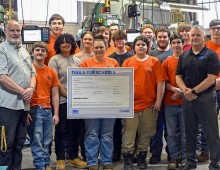


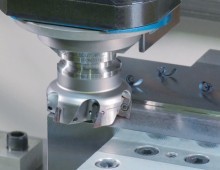
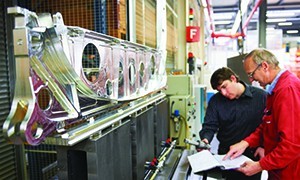
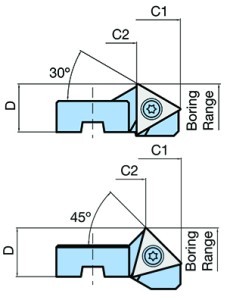
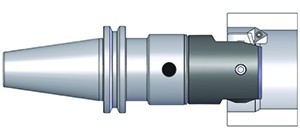
¿Te pareció interesante o útil? Haznos saber tu opinión agregando tus comentarios o preguntas a continuación.